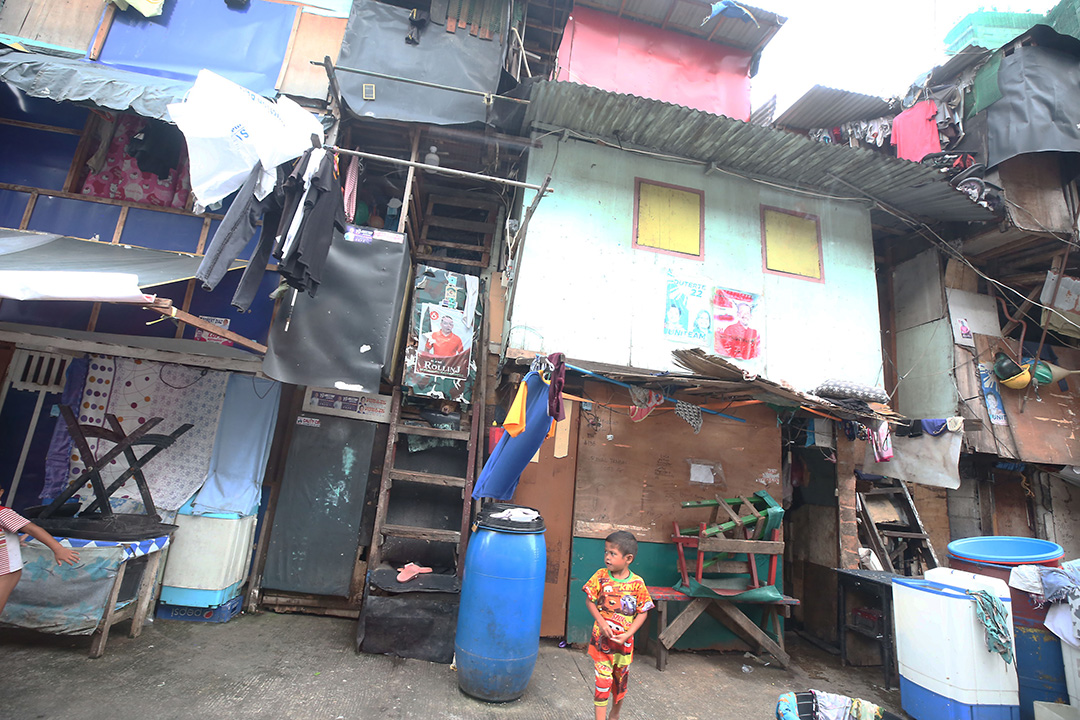




Policy Rate Updates: Double cut finale
 DOWNLOAD
DOWNLOAD

Monthly Economic Update: One for the road
 DOWNLOAD
DOWNLOAD

Inflation Update: Still low, still slow
 DOWNLOAD
DOWNLOAD


PH needs to grow by at least 8% to reduce poverty

The Philippine economy should grow by 8% or more annually to bring down the poverty incidence rate, which is currently the highest in the region, an economist said.
However, significant and rapid economic growth rates in the last four decades have not been accompanied by large reductions in poverty, another analyst said.
Bernardo M. Villegas, an economist from the University of Asia and the Pacific, said the Philippines’ 6-7% annual growth rate is not enough to bring down the poverty incidence to single digit.
“A 6-7% growth, no matter if it’s one of the highest in the region, will not bring down our poverty incidence to single digit. We have to grow at least 8% or higher,” he said during a BusinessWorld Insights webinar on Thursday.
Latest data from the Philippine Statistics Authority (PSA) showed that the Philippines’ poverty incidence, or the proportion of poor Filipinos whose per capita income is not sufficient to meet their basic food and nonfood needs, decreased to 22.4% in the first half of 2023 from 23.7% two years earlier.
 This was equivalent to 25.24 million poor Filipinos in 2023, lower than 26.137 million two years earlier.
This was equivalent to 25.24 million poor Filipinos in 2023, lower than 26.137 million two years earlier.
To grow by 8% or higher, the Philippine government needs to boost productivity in the agriculture sector, which should expand by at least 3% annually over the next five years.
Based on PSA data, the Philippine economy grew by 5.6% in 2023, slower than the 7.6% growth in 2022. The agriculture, forestry, and fishing sector posted growth of 1.2%, better than 0.5% in 2022.
Mr. Villegas said the government needs to attract more foreign direct investments to ensure long-term capital that is needed for at least 8% annual growth.
“Our investment-to-GDP ratio is still at a low of 22% and we must be able to increase that. It is quite clear that it will not come from local sources because we are highly indebted and our savings rate is also one of the lowest in this region,” he said.
Latest central bank data showed net inflows of FDIs into the Philippines rose by 27.8% to USD 1.048 billion in November 2023 from USD 820 million in the same month in 2022. This was the highest monthly FDI net inflow recorded since USD 2.662 billion in December 2021.
For the first 11 months of 2023, FDI net inflows went down by 13.3% to USD 7.58 billion from USD 8.74 billion in the comparable year-ago period. The BSP expects to record FDI net inflows of USD 8 billion at end-2023 and USD 10 billion at end-2024.
“We have to make sure that every year until the end of the present administration, we get an average of USD 15-20 billion worth of FDIs and that is not difficult to attain,” Mr. Villegas said, citing the Maharlika Investment Fund and an amended law for public-private partnerships.
The Marcos administration should also enhance its governance and boost the business environment in the Philippines, Mr. Villegas said.
“Oftentimes when I talk to foreign investors, the word is the left hand of the government does not know what the right hand is doing. That there is no coordination and sometimes even policies go against one another,” he said.
“So, if the present administration is able to improve business sentiment, fight against corruption, enhance agriculture productivity, and attract more foreign investments, we can bring down poverty incidence to single digit.”
Meanwhile, Jose Enrique “Sonny” A. Africa, executive director of think tank IBON Foundation, said a decrease in official poverty statistics was mostly due to changes in methodology rather than improvements in the income of the poorest households.
“For instance, changes in methodology in 2000 and 2009 in effect reduced poverty incidence by 6.5 and 6.1 percentage points, respectively,” he said. “Some portion of the gains from economic growth probably trickled down but definitely much less than official poverty figures would indicate.”
Mr. Africa also said that the recent decline in poverty incidence could be attributed to the short-term income boost that was provided by the Pantawid Pamilyang Pilipino Program, and not the creation of enough quality jobs.
“To be blunt — it is completely wrong to fixate on economic growth as if this headline statistic is what will reduce poverty incidence,” Mr. Africa said.
“The more important metrics to look at for really broad-based, equitable, and sustainable development are more productive agriculture, more extensive Filipino industrialization, and more extensive publicly provided social services and social protection,” he said.
Foreign industrial firms that operate as low value-added links of global value chains in export territories are not industrialization, he said.
“The structural reason for chronic poverty is that decades of reckless globalization have caused manufacturing to fall to its smallest share of the economy in 75 years, and agriculture to its smallest in history,” he said.
“This is because narrow-minded neoliberal thinking has wrongly dismissed the critical importance of responsible state intervention to develop the economy and reduce poverty.”
Mr. Africa said the government should address inequality to help reduce poverty. This includes wage increases to redistribute a portion of profits to workers, or a wealth tax for billionaires to expand social services. — Keisha B. Ta-asan
This article originally appeared on bworldonline.com





 By BusinessWorld
By BusinessWorld